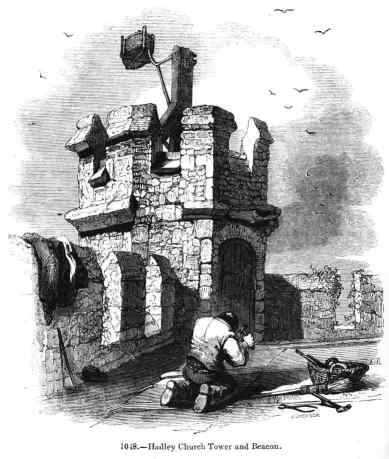Improving PROTAC properties via single-point changes to linkers
We explore how computational methods can be applied to proteolysis targeting chimera (PROTAC) design, to effectively tackle some of the ...
News
Members of the Cresset team are occasionally asked about the origin and meaning of our company name and so we decided to go directly to the source for answers. I founded the company back in 2001 and when asked about the name, he not only explained why he chose it, but gave us a detailed description of the word and a few examples of cressets in the world today.
cresset*-(origin: 1325–75; Middle English < Anglo-French, Old French craisset, equivalent to cras grease + -et): a metal cup or basket often mounted on a pole or suspended from above, containing oil, pitch, a rope steeped in rosin, etc., burned as a light or beacon.
The cresset light was formed of a wreathed rope smeared with pitch, and placed in a cage of iron, or it was a light from combustibles in a hollow pan. It was rendered portable by being placed on a pole, and so carried from place to place. Mr. Douce, in his “Illustrations of Shakspeare,” gives the following four representations (left picture) from old prints and drawings. Mr. Douce imagines the word cresset to have been derived from the French word croiset, a cruet or earthen pot.
When the cresset light was stationary it served as a beacon, or answered the purpose of a fixed lamp, and in this way our ancestors illuminated or lighted up their streets. There is a volume of sermons, by Samuel Ward, printed 1617-24, with a wood-cut frontispiece, representing the fixed cresset or street-lamp (right picture).
I first saw the word ‘cressets’ at school, where it was used by Glendower in Shakespeare’s Henry IV part 1 (‘the front of heaven was full of fiery shapes of burning cressets’). Forty years later, the word cropped up in an anthology of forgotten words and I was fascinated to read what a cresset actually was- after all that time. Cressets brought light to a dark world and turned heads to heralded events. I felt then that field technology shed new light on the way we think about molecules binding and ‘Cresset’ would be a good name for a company that wanted to spread these ideas. I still feel the same way now.
After the foundation of Cresset, the name was both admired and looked on with a jaundiced eye. One response was- ‘good idea for a company, pity about the name’ but others, particularly those involved with marketing and advertising the company, praised it as being outstanding and unforgettable. People have asked to change many things about the company since 2001 but no-one has ever suggested changing the name so I guess Cresset it is!’
 The earliest reference to a Cresset that we can find is in Eadmer’s History of Recent Events in England between 1066 and 1122 concerning the life and death of William II (Rufus).
The earliest reference to a Cresset that we can find is in Eadmer’s History of Recent Events in England between 1066 and 1122 concerning the life and death of William II (Rufus).
There is a cresset beacon in the vestry of St John’s Church, Farley Chamberlayne, Hampshire, UK, built between 1130 and 1160, which may possibly date from the reign of Edward III (above right). It was certainly used at the time of the Armada
The cresset is still remaining at Hadley Church, Middlessex, reminding us of the warlike days when watches were regularly stationed at such places “Before the reign of Edward III, beacons were but stacks of wood set up on high places, which were fired when the coming of enemies was descried; but in his reign pitch-boxes, as now they be, were, instead of those stacks, set up; and this properly is a beacon.” (Lord Croke.). On top of a turret at the South West angle of the tower is an iron cresset, fire pan or pitch-pot, an almost unique survivor of other days. It was erected by the monks to guide wayfarers crossing Enfield Chase by night, and travellers to or from St Albans, or the north. The beacon may have been used as late as 1745 to provide an alarm to warn of the Stuart rising in the North. It was used for a more pleasant occasion to mark the marriage of the Prince of Wales in 1863, when the future Edward VII married Princess Alexandra of Denmark.”
*cresset. (n.d.). Dictionary.com Unabridged. Retrieved February 06, 2012.